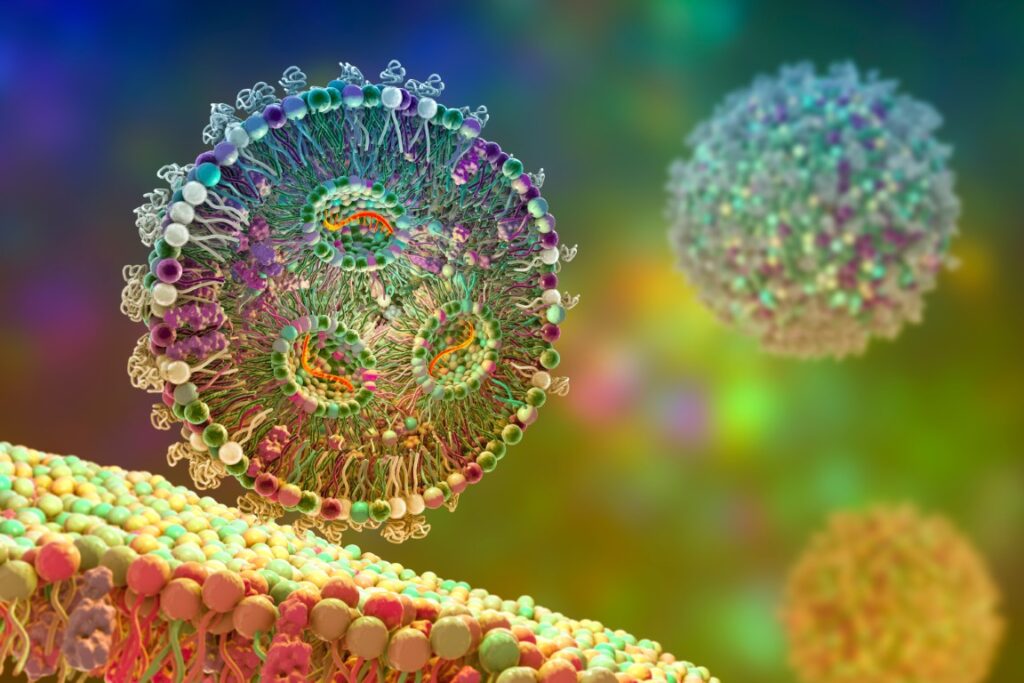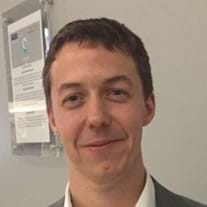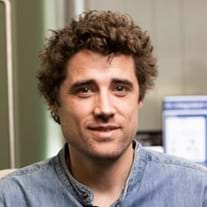
Self-boosting vaccines. Regeneration of diseased tissues and missing limbs. Organs on a chip.
Published March 06, 2024
By David Freeman

Such life-saving advances in biotechnology—some already in existence and others in the works–took the spotlight on February 8, 2024, when thousands of attendees around the world gathered online for the Paul Janssen Award Symposium in honor of Robert S. Langer, ScD, a renowned chemical engineer and entrepreneur best known for his pioneering work in drug delivery systems and tissue engineering.
Dr. Langer, whose work has led to new treatments for heart disease, cancer, arthritis, and other ailments, is the 2023 recipient of the Paul Janssen Award for Biomedical Research. Given annually by Johnson & Johnson to a scientist or scientists who have made a “transformational contribution toward the improvement of human health,” the award includes a sculpture and a $200,000 cash prize. Eight of the 23 scientists who have received the award have gone on to win the Nobel Prize.
Impactful Research from MIT
Hosted by The New York Academy of Scientists and the Dr. Paul Janssen Award, with sponsorship by J&J, the event featured a keynote address by Dr. Langer as well as talks by a trio of eminent researchers who trained with him at the Massachusetts Institute of Technology, where he is one of a handful of faculty members who hold the prestigious title of Institute Professor.
The other researchers, who detailed their own research and described Dr. Langer’s contributions as a scientist and mentor, were Cato T. Laurencin, M.D., Ph.D., professor of orthopedic surgery at the University of Connecticut and CEO of the Cato T. Laurencin Institute for Regenerative Engineering; Kristi Anseth, Ph.D., professor of chemical and biological engineering at the University of Colorado; and Gordana Vunjak-Novakovic, Ph.D., professor of biomedical engineering and medicine at Columbia University.
The event began with remarks from Academy president and CEO Nicholas B. Dirks who hailed Dr. Langer as “a luminary figure” whose work “reflects a visionary spirit that advances science while demonstrating the importance of this research for the public good, inspiring the next generation of innovators and scientists to follow in his path.” Following Professor Dirks, William N. Hait, M.D., Ph.D., Executive Vice President, Chief External Innovation and Medical Officer, and a member of the Johnson & Johnson Executive Committee, praised Dr. Langer for his groundbreaking work at the intersection of biomaterials and biotechnology. He also highlighted Dr. Langer’s remarkable productivity, with over 1,400 patents issued or pending and nearly 1,600 publications.
Blazing a Trail in Biotechnology
Dr. Langer said he was humbled to have received the award and then went on to explain the roundabout way he got his start in biotechnology. After getting a chemical engineering degree from Cornell University in 1974, he said, he turned multiple job offers from oil companies. “I just didn’t want to spend my life doing that,” he recalled. He wrote to universities, medical schools, and hospitals, hoping to land a job in science curriculum development or in medicine—but got nowhere, he said, because he lacked the right pedigree for such work.
Ultimately, Judah Folkman, a Boston surgeon with a reputation for hiring “unusual people” to work in his lab, brought on the young engineer with the task of developing tiny particles that release molecules that block the growth of blood vessels within tumors. Blocking this growth, the “anti-angiogenesis” theory went, would starve tumors of the oxygen and nutrients they need to grow.
Many scientists said the task was impossible. But Dr. Langer was undeterred. “I spent several years working on this, and I literally found several hundred ways to get this to not work,” he said. “But eventually we got one way to get it to work, and I was able to make these tiny little particles.”
The First Anti-angiogenesis Cancer Drug to Win FDA Approval
In a 1976 paper published in the journal Science, Dr. Langer showed that microparticles that deliver macromolecules could indeed inhibit blood vessel formation in tumors. Years later, he patented the technology, and in 2004 Avastin (bevacizumab) became the first anti-angiogenesis cancer drug to win FDA approval. It and other drugs based on the technology are now used to treat various cancers, as well as the vision-robbing eye disorders macular degeneration and diabetic retinopathy, which are caused by abnormal vascularization in the back of the eye.
Dr. Langer and his collaborators went on to develop polymer materials that could be tailored to release drugs within the body continuously at a specified rate—a functionality that they thought might prove useful for the treatment of brain cancer. As with the earlier anti-angiogenesis research, other researchers expressed skepticism about the safety and effectiveness of these synthetic degradable polymers. But Dr. Langer and his collaborators, including Dr. Laurencin, didn’t give up; in 1996 the FDA approved Gliadel for the treatment of glioblastoma multiforme, the deadly brain malignancy. It was the first new drug approved for the treatment of brain cancer in two decades and the first ever approved for local chemotherapy, according to Dr. Langer.
Applications to Covid
Dr. Langer went on to help in the development of a technology to immunize people against Covid without the need for repeated injections, using 3D printing to fabricate microneedle-equipped transdermal patches that deliver periodic “pulses” of vaccine without the need for repeated booster shots. Ongoing research, he said, will find out if related technologies might be possible to engineer synthetic tissues and organs that would replace diseased ones. “You could combine cells with materials and theoretically make almost any organ,” he said, including skin to treat burns and diabetic ulcers.
Dr. Langer said, “I’m incredibly proud of my students, who received all kinds of awards and great jobs”—and the three speakers returned the compliment to their former mentor.
An “unmatched record of brilliance”
Dr. Vunjak-Novakovic said Dr. Langer has an “unmatched record of brilliance.” With his more than 400,000 citations and 1,600 papers, she said, he is “the fourth-most cited scientist of any kind in the world and the most cited engineer in human history…About 400 of his 1,000 trainees are today faculty at prime universities around the world.”
Said Dr. Anseth, “He was always very encouraging. To this day I’m inspired by his ability to be available. Usually, his response time is in minutes and not hours.”
Dr. Anseth said she had a longstanding interest not only in developing new disease-fighting biomaterials but also in exploiting patient-specific cells or tissues with the goal of moving from off-the-shelf drugs into personalized, sex-specific medicine. “A lot of times in medicine, we scale down products, so we think of a woman as a small man…but that is not the case at all.”
Different Affects for Males and Females
Many ailments affect males and females differently, she said, including mental illness, osteoporosis, and cardiovascular disease. She recounted her and her collaborators’ work on valvular heart disease in particular, an ailment that traditionally has required surgery to replace the diseased heart valve to restore cardiac function. Men’s aortic valves tend to develop calcified deposits, she said, whereas women’s tend to thicken and become more fibrotic. Dr. Anseth wondered: Could valvular disease be treated medically rather than surgically? Should women with valve disease get different treatment than men?
Research showed that when cells taken from diseased valves were cultured in the lab, the genes expressed by the cells changed markedly, thus making it hard to understand the disease process in vivo. But when the cells were placed on newly developed hydrogel materials rather than the hard plastics typically used for cell culture, she said, they behaved as they did inside the body. That gave the researchers a good model for studying valvular disease—which, in turn, might help lead the way to drugs that could transform diseased heart cells into healthy, quiescent ones.
“We designed in our hydrogel systems ways that could recapitulate these [sex-linked] differences where the females would get lots of fibrosis and collagen and the males would get much more calcification,” she said. “And we can use this for screening different types of drugs.”
Organs on a Chip
Dr. Vunjak-Novakovic described recent work with human stem cells, including their use in tissue regeneration research and the creation of so-called organs on a chip, which emulate organ function outside the body. Recently, she’s been involved in research aiming to find develop a system for restoring the health of human donor lungs so that more can be implanted and fewer discarded. Studies with pig and human lungs have shown that it is possible to improve the performance of diseased lungs, she said.
Dr. Vunjak-Novakovic concluded her remarks by recounting a list of 10 life lessons she had learned from Dr. Langer. Among these were: “dream big and take big risks; work on something you’re passionate about and things take care of themselves; pursue science that can benefit people; and work hard and be strong and never give up.”
Dr. Laurencin said Dr. Langer had taught him not to confuse activity for accomplishment, and that “everything you do should be extremely meaningful.” He praised Dr. Langer for inspiring generations of researchers and helping them balance their research with family life. “Bob Langer rubs people the right way,” he said.










